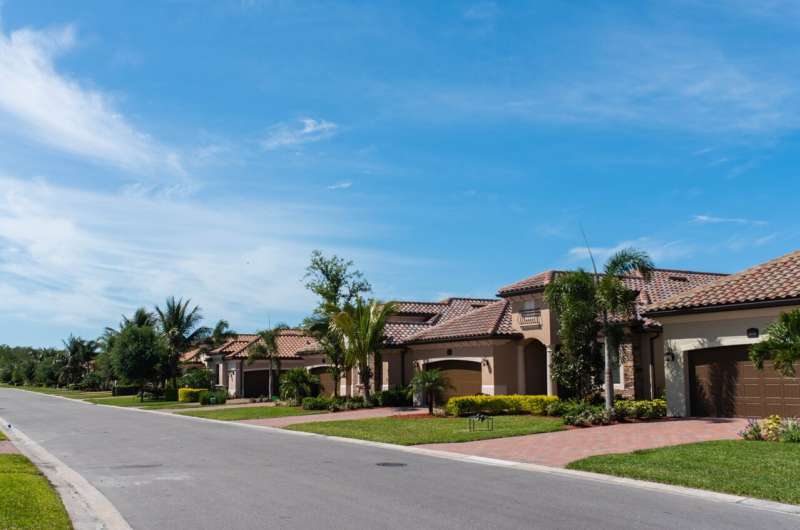This article has been reviewed according to Science X's editorial process and policies. Editors have highlighted the following attributes while ensuring the content's credibility:
fact-checked
proofread
After hurricanes, Florida neighborhoods see steady housing demand, wealthier residents

A new peer-reviewed study, which analyzes Florida housing markets battered by hurricanes, finds that affected areas tend to gentrify slightly in the years following a storm: The average income of new buyers increases while long-term demand stays stable.
The authors of the paper—who are based at Resources for the Future (RFF), the University of California San Diego, and the US Government Accountability Office—use data from county tax assessments, the National Oceanic and Atmospheric Administration (NOAA), and Zillow to gauge conditions of the housing markets and population turnover in Florida from 2000 to 2016.
The paper is published in the Journal of Environmental Economics and Management.
The finding that housing demand didn't decrease—and, perhaps counterintuitively, attracted wealthier inhabitants—was particularly surprising to the authors, especially given Florida's reckoning with hurricane adaptation and resilience measures in the face of climate change.
"Hurricanes are projected to get stronger," coauthor and RFF Fellow Yanjun (Penny) Liao said. "Our findings show that the idea that people will naturally retreat from hazardous areas may not necessarily hold up. In Florida, at least, it appears that market forces are not encouraging people to move to safer places."
The authors find that hurricanes cause a temporary increase in home prices, likely due to the sudden decrease in housing supply from storm losses. However, they find that prices subside to baseline levels after an average of three years, which is approximately how long it takes for areas to build up housing stock to pre-storm levels. But during those pivotal three years when housing prices are higher than normal, the authors note several important tendencies:
- In the three years following a hurricane, the average income of new buyers increases proportionally to the rise in home prices. By the time prices stabilize, more than a quarter of all homes are occupied by households with a higher income than before the hurricane arrived.
- Home prices in hurricane-ravaged areas are 5 percent higher on average than unaffected ones during the three years following a hurricane. After three years, prices return to—but do not drop below—pre-storm levels.
- There is no significant change to the socio-demographic characteristics of neighborhoods after a hurricane other than income.
- Hurricanes do not fundamentally change the long-run demand for housing in affected areas.
One hypothesis for the gentrification phenomena is that wealthier households may move into communities at a higher rate following a storm because they have a greater ability to both absorb the temporary price increase and any insurance cost increases.
"In some ways, this indicates a market flaw given the current state of the climate," said co-author Joshua Graff Zivin of the University of California San Diego. "Policies may be needed to ensure that these communities have strong adaptation and mitigation measures in place to deal with future storms."
The findings in this study are something that the National Flood Insurance Program (NFIP) and federal disaster assistance programs could find useful. Gentrification in Florida could lead to higher post-hurricane insurance claims from the NFIP, which could place a heavier burden on federal taxpayers, who back the program. In addition, federal spending in disaster assistance could also increase as a result.
The authors note that future research should examine the equity implications of post-hurricane housing markets, particularly in the context of fluctuating housing prices and options available to lower income buyers and renters in the years following a hurricane.
More information: Joshua Graff Zivin et al, How hurricanes sweep up housing markets: Evidence from Florida, Journal of Environmental Economics and Management (2022). DOI: 10.1016/j.jeem.2022.102770
Provided by Resources for the Future (RFF)





















